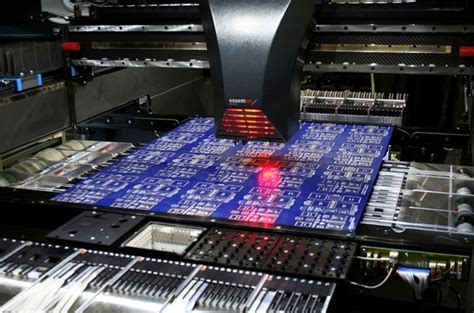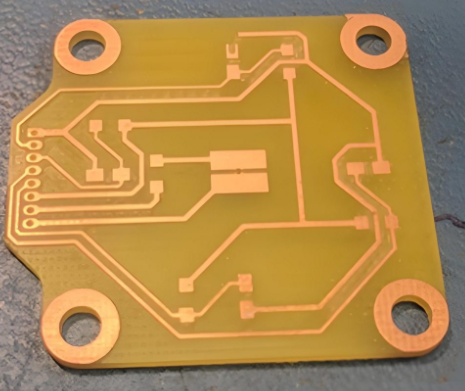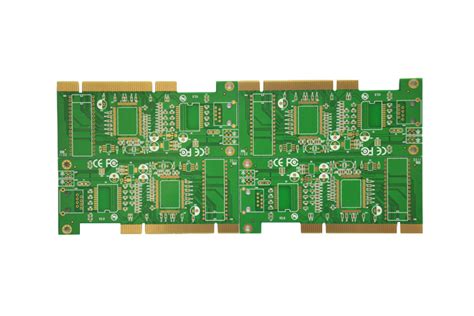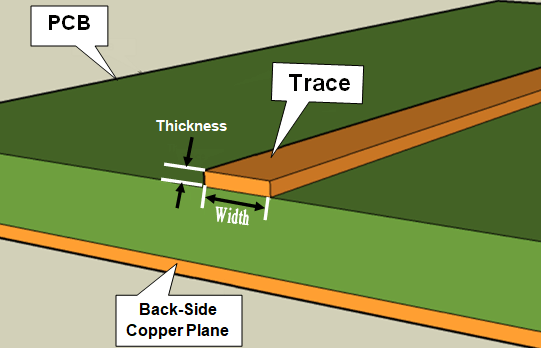Mastering the Art of Printed Circuit Board Assembly: Essential Techniques and Tips
Key Takeaways
In mastering the art of PCB assembly, it’s crucial to recognize the importance of precision and efficiency. By understanding basic concepts, utilizing the right tools and materials, and adhering to best practices for preparing both the PCB and its components, you set a strong foundation for success. Implementing proper soldering techniques ensures clean and robust connections, which are pivotal for maintaining the reliability of your project. Addressing common challenges head-on with practical solutions is essential in avoiding costly mistakes and setbacks. Embracing advanced techniques can further refine your skills, pushing your craftsmanship to a professional level. Consistent application of quality control measures guarantees that your assembled PCBs not only perform well but also stand the test of time.
Introduction to PCB Assembly: Understanding the Basics
Printed Circuit Board Assembly (PCB Assembly or PCBA) is a foundational process in the electronics manufacturing industry. It involves mounting various electronic components onto a PCB to create functional circuits. Understanding the basics of PCB assembly is crucial, as this knowledge underpins the reliability and performance of electronic devices.
The process begins with the preparation of the PCB, which involves cleaning to remove contaminants and ensuring that the board is free from defects. Selecting high-quality components and ensuring their compatibility with the PCB layout is also vital. Each component must be carefully placed according to the design layout, usually through automated machines for high accuracy in high-volume production or manually for prototypes and small batches.
Soldering is a critical step in PCBA, where components are fixed onto the board using solder paste. This paste, when heated, melts and then solidifies to create electrical connections between components and PCB pads. There are two primary soldering techniques – reflow soldering for surface mount devices (SMD) and wave soldering for through-hole components.
Quality control measures must be implemented throughout every stage of PCB assembly to ensure functionality and longevity of the assembled boards. These measures include visual inspections, automated optical inspections (AOI), X-ray inspections for hidden joints, and functional tests.
Understanding these basic principles forms the bedrock upon which more advanced techniques can be built, making it possible for both beginners and seasoned professionals to achieve high-quality results in their PCBA projects.
Essential Tools and Materials for PCB Assembly
When it comes to PCB assembly (PCBA), having the right tools and materials at your disposal is paramount for ensuring accurate and efficient results. The assembly process involves a precise blend of manual skills and specialized equipment.
First and foremost, a soldering iron with an adjustable temperature setting is indispensable. The ability to control the heat ensures that you can achieve clean, strong solder joints without damaging sensitive components. For more advanced work, a soldering station equipped with a hot air rework tool can be extremely beneficial.
Equally important is the selection of solder wire, typically made from an alloy of tin and lead or lead-free alternatives like SAC305. Using high-quality solder ensures better conductivity and durability of your connections.
“A reliable soldering iron and high-quality solder wire are fundamental to achieving professional results in PCB assembly.”
In addition, flux plays a crucial role in helping the solder flow smoothly on the metal surfaces by reducing oxidation. Flux pens or paste are commonly used for this purpose and make the job much easier.
For handling small components, precision tools like tweezers, magnifying glasses, or even microscopes are essential. These tools facilitate accurate placement and inspection of tiny parts, which is vital for modern PCBs that often use miniature surface-mount technology (SMT) components.
A good quality multi-meter is indispensable for testing connections, verifying component values, and ensuring there are no shorts or opens in your circuits. Furthermore, having an anti-static mat or wrist strap will protect sensitive electronic components from static discharge during assembly.
Finally, consumables such as desoldering braid or a vacuum desoldering pump are necessary for correcting mistakes efficiently without damaging other components on the board.
With these essential tools and materials at hand, you can approach PCBA with confidence, knowing you have the right equipment to create reliable and high-quality assemblies.
Preparing the PCB and Components: Best Practices
Before diving into the intricate process of PCB assembly, it is essential to ensure that both the printed circuit board (PCB) and its components are adequately prepared to guarantee a smooth and successful assembly. Start by thoroughly cleaning the PCB to remove any dust, grease, or contaminants that could affect soldering. Use isopropyl alcohol or a specialized circuit board cleaner for this purpose. Once clean, inspect the PCB for any visible defects such as broken traces or uneven surfaces.
Organizing components is another crucial step. Sort and arrange all components systematically, grouping resistors, capacitors, ICs, and other parts separately. This will streamline the assembly process and minimize errors. Additionally, it’s important to check each component’s specification against the PCBA design documents to ensure compatibility.
When handling electronic components, always use anti-static precautions such as wrist straps and anti-static mats to prevent damage from electrostatic discharge (ESD). Label each section of the board clearly if your project involves multiple stages or layers of assembly.
For surface mount technology (SMT) components, ensure proper alignment before soldering by using a stencil for applying solder paste accurately. For through-hole components, verify that each pin fits snugly into its corresponding hole without requiring excessive force.
By adhering to these best practices in preparing your PCB and its components, you lay a solid foundation for error-free PCBA. Remember that meticulous preparation can drastically reduce assembly time and improve overall reliability of your electronic projects.
Soldering Techniques: Tips for Clean and Strong Connections
In PCB assembly, achieving clean and strong solder joints is paramount to the overall performance and reliability of the circuit board. Successful soldering begins with selecting the right solder type. Lead-free solder, for instance, is increasingly popular due to environmental concerns. Whether you choose lead-free or traditional lead-based solder, ensure it has a rosin core for better fluxing action.
Properly prepping your work area is another key factor. Keep your workspace clean and organized with essential tools, such as a soldering iron, desoldering wick, and flux pen. The type and temperature of the soldering iron are crucial as well; a temperature-controlled iron ensures that you operate within an optimal range, generally between 350°C and 400°C for most PCBA.
When it comes to technique, apply a small amount of soldering flux to both the component lead and the PCB pad to improve wetting and reduce oxidation. Position the soldering iron tip to touch both the pad and lead simultaneously. The heat will transfer through these points quickly; once they are hot enough (usually within a couple of seconds), introduce the solder wire to the joint. Allow it to flow around both components intuitively without force, then remove both the iron and wire simultaneously.
Ensuring a good connection also involves inspecting each joint carefully. A well-soldered joint will appear shiny and smooth without any visible cracks or voids. Using a magnifying glass can help catch cold joints, which might not conduct electricity efficiently.
Finally, always follow safety protocols in your workspace—wear protective eyewear, ensure adequate ventilation when using fluxes or solvents, and regularly check your tools for damage or wear-and-tear.
Master these essential techniques in PCB assembly, and you’ll consistently produce robust connections that ensure your electronic devices function flawlessly over time.
Quality Control: Ensuring Reliability and Performance
In PCB assembly (PCBA), ensuring the reliability and performance of your boards is paramount. Quality control processes are essential to detect any defects and guarantee that the end product meets your specifications. One of the primary methods used in quality control for PCB assembly is Automated Optical Inspection (AOI). This technique employs high-resolution cameras to scrutinize the PCB for flaws such as incorrect component placement, soldering defects, or missing components. Another vital process is In-Circuit Testing (ICT), which checks the functionality of the assembled PCB by verifying electrical connections and values.
A rigorous functional test follows to ensure that the PCB performs as intended under real-world conditions. This could involve simulation testing where the board’s electrical characteristics are challenged using various test scenarios. Additionally, X-ray inspection is often employed for complex or multilayer PCBs to detect voids, solder bridging, and internal faults that are not visible through AOI.
Employing statistical process control (SPC) techniques can further enhance quality by monitoring production processes in real-time and identifying variations before they lead to defects. SPC relies on statistical methods to predict potential quality issues and allows for preemptive measures.
Lastly, environmental stress screening (ESS) evaluates how PCBs handle environmental conditions like temperature changes and vibration. By simulating extreme operational conditions, ESS ensures that your PCB will perform reliably even in harsh environments.
Incorporating these quality control measures into your PCBA process not only enhances reliability but also boosts performance, ensuring high-quality outcomes for every project.
Common Challenges in PCB Assembly and How to Overcome Them
In the intricate world of PCB assembly, several challenges can impact the efficiency and quality of your work. One of the most common issues is misalignment of components. To mitigate this, always double-check the placement before soldering, using PCB holder tools to maintain stability. Another frequent problem is solder bridges or insufficient solder joints, which can lead to poor electrical connections or short circuits. Ensure you utilize precise soldering techniques and regular inspections with magnification tools for better accuracy.
Component damage poses another significant challenge during PCBA. Handling delicate components with anti-static precautions and proper tools can drastically reduce damage risks. Moreover, always being cautious about temperature settings on your soldering iron or reflow oven can prevent overheating and subsequent component failure.
Thermal management also demands attention, as overheating during assembly or in operation can degrade performance. Strategically place heatsinks or thermal vias to manage heat dissipation effectively. Additionally, solder quality is a critical aspect; using high-grade flux and maintaining a clean workspace prevents contamination and improves overall reliability.
A skilled assembler must also navigate the complexities of wave soldering versus reflow soldering techniques, choosing the appropriate method based on component type and board design. Lastly, achieving high yield in PCB assembly involves consistent practice of quality control measures such as automated optical inspection (AOI) for identifying assembly defects early in the process.
By understanding these common challenges and implementing best practices, you can significantly enhance your efficiency and precision in PCBA, ensuring a high-quality outcome for all your electronic manufacturing projects.
Advanced Techniques for Professional-Level PCB Assembly
Advancing your PCB assembly skills requires mastering a spectrum of techniques that ensure both precision and efficiency. One crucial method is the implementation of surface mount technology (SMT). This involves placing components directly onto the surface of the PCB rather than inserting them into holes, which is a method commonly known as through-hole technology. Mastery of SMT can significantly reduce assembly time and improve the performance of the final product.
Another advanced technique to explore is the use of reflow soldering. In this process, solder paste is applied to connect components to contact pads, and then the entire assembly is heated so that the solder can melt and establish all necessary electrical connections. Reflow soldering is particularly useful for mass production settings where consistency and speed are paramount.
Additionally, incorporating automated optical inspection (AOI) into your PCBA workflow can be a game changer in ensuring quality control. AOI systems use high-resolution cameras to capture images of various assembled boards and then compare these images to ideal models, identifying any discrepancies or defects in real-time. This not only boosts reliability but also reduces human error.
Applying thermal profiling during reflow processes can help in accurately determining optimal heating cycles for different types of components, further enhancing reliability and reducing stress on sensitive parts. Utilizing these advanced methods within your PCBA not only refines quality but also positions your work at a professional level.
By integrating these sophisticated techniques into your PCB assembly practices, you pave the way for improved accuracy and efficiency, ultimately achieving superior results in your electronic manufacturing projects.
Conclusion
Mastering PCB assembly is both an art and a science, requiring a keen eye for detail and a deep understanding of the techniques involved. Throughout this guide, we have explored the essential methods and best practices that form the foundation of successful PCBA. From understanding the initial steps of component preparation to honing your soldering skills for clean and strong connections, each segment is designed to enhance your proficiency in this intricate field. By embracing quality control measures and addressing common challenges with practical solutions, you are equipped to ensure reliability and optimal performance in every project. As you advance, integrating advanced techniques will further elevate your craftsmanship, making you adept at navigating even the most complex scenarios in electronics manufacturing. Whether you are a beginner or an experienced professional, these insights are aimed at making your journey in PCB assembly both rewarding and efficient.
Frequently Asked Questions
When delving into PCB assembly, various questions often arise regarding the intricate PCBA process. Below, we address some of the most frequently asked questions to clarify common concerns and enhance your understanding:
Q: How do I ensure reliable connections during PCB assembly?
A: Achieving reliable connections involves utilizing proper soldering techniques and ensuring that all components are correctly aligned. Maintaining a clean work environment and using high-quality materials can also significantly impact the reliability of your connections.
Q: What are some common challenges in PCB assembly?
A: Common challenges include managing thermal stress, ensuring correct component placement, and achieving precise solder joints. Mitigating these issues requires a combination of well-maintained tools, thorough preparation, and attention to detail.
Q: How can I improve my efficiency in PCB assembly?
A: Improving efficiency involves mastering essential techniques such as using automated equipment where possible, organizing your workspace effectively, and continuously refining your skills through practice and education.
Q: What safety precautions should I take during PCB assembly?
A: Safety precautions include wearing protective gear, using well-ventilated areas to avoid inhaling fumes from soldering, and ensuring that all electrical equipment is properly grounded.
For more information on professional-level techniques in PCB assembly, please click here: Enhance Your PCB Assembly Skills.







